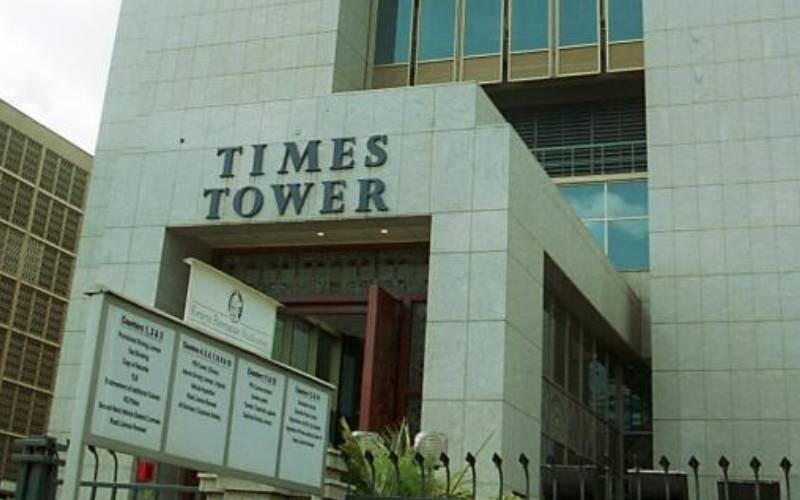
Along the white sandy beaches of Nyali, Mombasa, tall palm trees wave behind a beautiful Sh6 billion resort.
Scenic as it may be, it has been on sale for the last three years. The owners of the hotel have yet to find a buyer.
Despite their intense efforts to go after even international investors, no buyer has shown interest in snapping up this gem that overlooks the Indian Ocean.
Now, out of desperation, they are willing to take half what they wanted - they will settle for Sh3 billion.
The owners of the hotel are not alone. If anything, they are perhaps better off than many other owners of property that is in distress who cannot get buyers, even at cut prices.
In an even worse position are banks that have repossessed properties from defaulting clients and put them up for auction, but these are largely unsuccessful. The auctioneer’s hammer will not fall.
An analysis by Home & Away has revealed that of the hundreds of properties on auction - on the back of a slowing economy - only a handful have found buyers. The most affected are high-end properties.
Together, auctioneers have tried to dispose of houses – both residential and commercial – whose value could be running into billions of shillings.
In the month of January alone, one of the largest auctioneers put up for sale property worth Sh5 billion.
Among the houses that stand out and have been put up for auction in the recent past include a section of Nextgen Mall along Mombasa Road, the Nairobi Upper Hill Hotel and a three-bedroom villa at the prestigious Great Rift Valley Lodge where a unit can go for Sh50 million.
Others are Thika Business Centre (whose anchor tenant is Naivas Supermarket) estimated to be worth Sh540 million, and a penthouse at The Mirage in Westlands that can fetch Sh48 million under normal circumstances.
Industry players, however, say just about 10 per cent of the properties on auction are finding buyers. There are instances where the auctioneers have not found anyone willing to bid above the reserve price.
Basically put, there is no shortage of houses that buyers can get for a bargain.
This has seen phrases like ‘buyer’s market’ thrown around, yet many of the distressed owners are unable to offload their assets.
Stay informed. Subscribe to our newsletter
Garam Investments Managing Director Joseph Gikonyo, whose firm is auctioning properties worth billions of shillings this year, said out of 10, only one property is finding a buyer. He pointed to a bad economy and struggling businesses owing to high tax rates.
“The overall economy is doing badly. The county governments are not paying suppliers, and this has to have an impact,” he said.
“KRA is another issue; it’s going hard on SMEs with tax demands. Businesses are closing rather than struggling. It’s hard to auction in such an economy.”
Mr Gikonyo said household goods like cookers and fridges are the only fast-moving items at auctions. Buyers are likely to get a bargain on electronics and other items that do not require too much capital.
A limiting factor for the auctions however could also be a recent law that seeks to protect property owners, dictating that property sold at auctions cannot be sold at under 75 per cent of the market price.
“Selling will take longer. We have to keep trying,” said Gikonyo. “Out of 10 we’re only managing to sell one whereas in the past we used to sell seven.”
Defaults on mortgage loans advanced by banks have been on the rise. The latest data by Central Bank of Kenya (CBK) shows that default on mortgages increased 41 per cent in the year to December 2018 to Sh41 billion from Sh27.3 billion in 2017.
The rate of defaults on mortgages is much higher when compared to other loans by banks, which stood at 12.3 per cent in 2018.
“The outstanding value of non-performing mortgages increased from Sh27.3 billion in December 2017 to Sh38.1 billion in December 2018. The mortgage NPLs (non-performing loans) to gross mortgage loans was 16.9 per cent in December 2018 as compared to 12.2 percent in December 2017.
“The ratios were above the industry gross NPLs to gross loans ratio of 12.3 percent in December 2017 and 12.7 percent in December 2018,” CBK said.
A handful of the big banks control the Kenyan mortgage market, with the CBK data showing that six institutions control 76.1 per cent of the mortgage loans advanced to Kenyans.
The largest mortgage lenders are KCB with a market share of 28.59 per cent, HFC (14.99 per cent), Standard Chartered Bank (11.52 per cent), Stanbic Bank (11.40 per cent) and Co-operative Bank (5.21 per cent).
Banks hard hit by high mortgage NPLs have resorted to working with their customers to get to an amicable end.
These include jointly taking property to auctions as opposed to the aggressive approach they have taken in the past, where they kicked owners out of houses on defaulting.
They are also renegotiating loans, for instance by increasing the repayment period and reducing the monthly remittances.
Kimani Thambo, Chief Executive of Himaya Heights Investment said such “diplomacy” by lenders was previously unheard of.
“Lending institutions are using tactics such as decreasing the monthly installments, increasing the loan duration and allowing customers to look for clients to buy their properties,” he told Home & Away.
“This is as opposed to former days when clients used to be evicted from their properties to give way to a new owner, after a successful auctioning process.”
He noted that real estate agents are going for even weeks without getting ‘serious’ enquiries on property they have put in the market, describing the current conditions as “hell of a time” for the real estate industry.
“You’ll be lucky to get a serious enquiry. It is difficult to come by a client who views a property and registers an interest by giving an offer,” said Mr Thambo, who is based in Mombasa.
Steve Ogada, an associate principal at finance advisory firm InVhestia, also pointed to a bad economy as the contributor to the numerous auctions. It is also the cause of failed auctions.
“Banks have a lot of non-performing loans because of the status of the economy and go to foreclosure, they have to offload the collateral that had been secured,” he said, adding that high-end areas have been hit hardest.
“There’s been a glut on the high-end segment. That’s why if you drive along Kilimani, and Lavington, (you’ll see) a lot of complete houses but no curtains. They aren’t occupied.”
It might take another few years before the market normalises. Real estate consultancy firm Knight Frank said the market has started trending upwards, with expectations that it will have fully recovered over the next two years.
Knight Frank Kenya Managing Director Ben Woodhams said the property market will soon correct itself. He said that due to the 2016 rate cap real estate projects had slowed down.
While the sector remained a buyer’s market owing to an oversupply especially in the high end segment, he said, prices are starting to stabilise.
“While the market looks like it has an oversupply at the moment the amount of space coming into the market has actually reduced partly because of the liquidity issues caused by the interest rate caps that came in 2016. We’ve actually seen the slowdown in development and as a result the oversupply situation is slowly correcting itself,” said Mr Woodhams.
[email protected]
 The Standard Group Plc is a
multi-media organization with investments in media platforms spanning newspaper
print operations, television, radio broadcasting, digital and online services. The
Standard Group is recognized as a leading multi-media house in Kenya with a key
influence in matters of national and international interest.
The Standard Group Plc is a
multi-media organization with investments in media platforms spanning newspaper
print operations, television, radio broadcasting, digital and online services. The
Standard Group is recognized as a leading multi-media house in Kenya with a key
influence in matters of national and international interest.
 The Standard Group Plc is a
multi-media organization with investments in media platforms spanning newspaper
print operations, television, radio broadcasting, digital and online services. The
Standard Group is recognized as a leading multi-media house in Kenya with a key
influence in matters of national and international interest.
The Standard Group Plc is a
multi-media organization with investments in media platforms spanning newspaper
print operations, television, radio broadcasting, digital and online services. The
Standard Group is recognized as a leading multi-media house in Kenya with a key
influence in matters of national and international interest.









